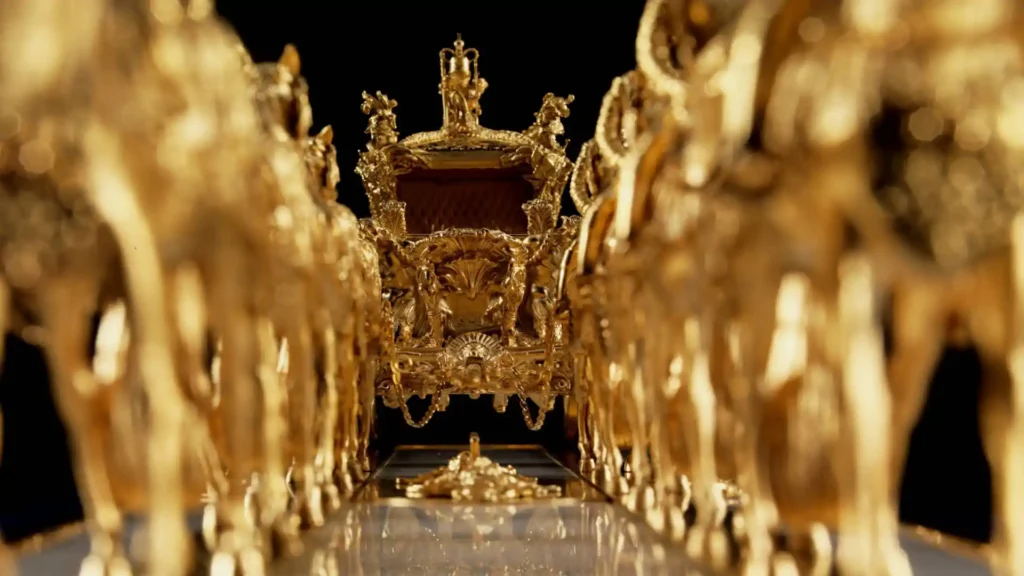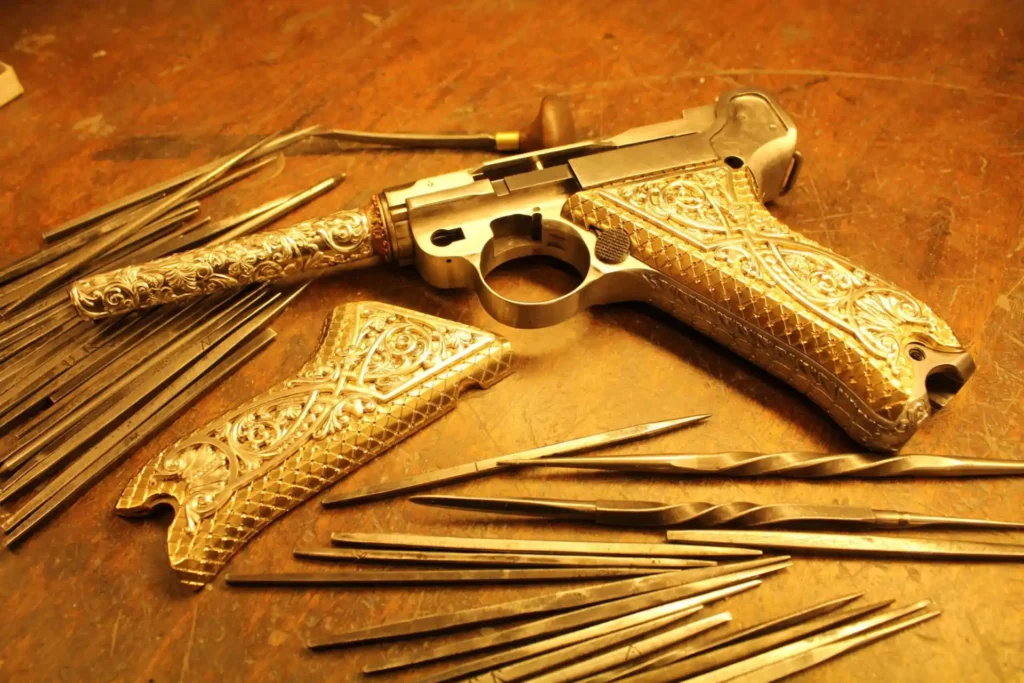History of Mueller Murgenthal
The True Masters
Swiss family armorers The House of Mueller Murgenthal’s dream and give life to weapons like no one before. These weapons are telling stories suspended between fantasy and reality, coming to life as firearms joining century-old silver smithing, ballistic science.
And just when you think that this fantastic world of fine weapons has displayed it all, when everything seems to have been written, each stone turned and that all dreams awakening from the folds of the night have been sculpted in steel and wood, they come across another view of the world, another dream, another sight into the three dimensions.
Makers of high-end firearms and objects for Royal Houses and State Representatives.
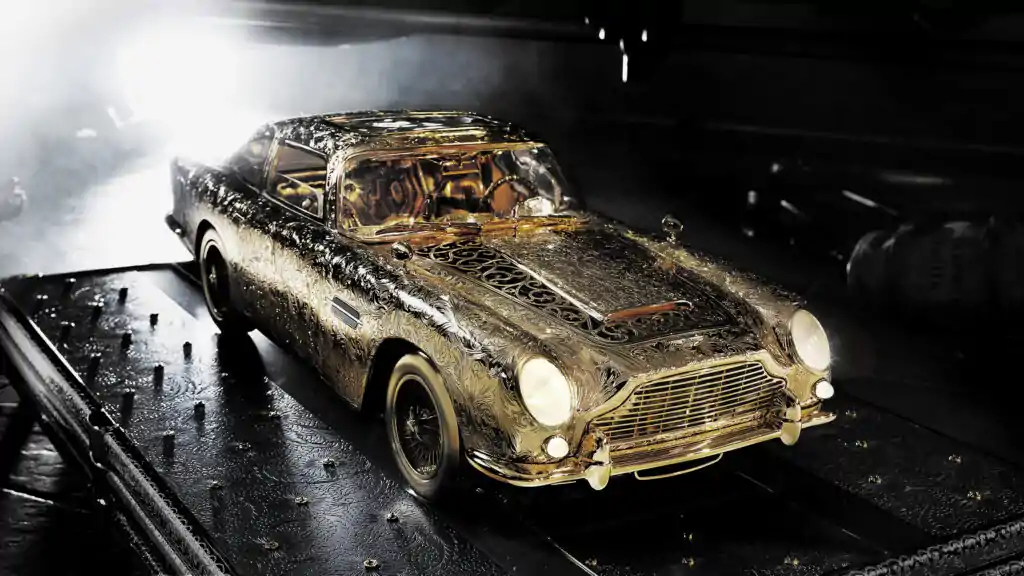
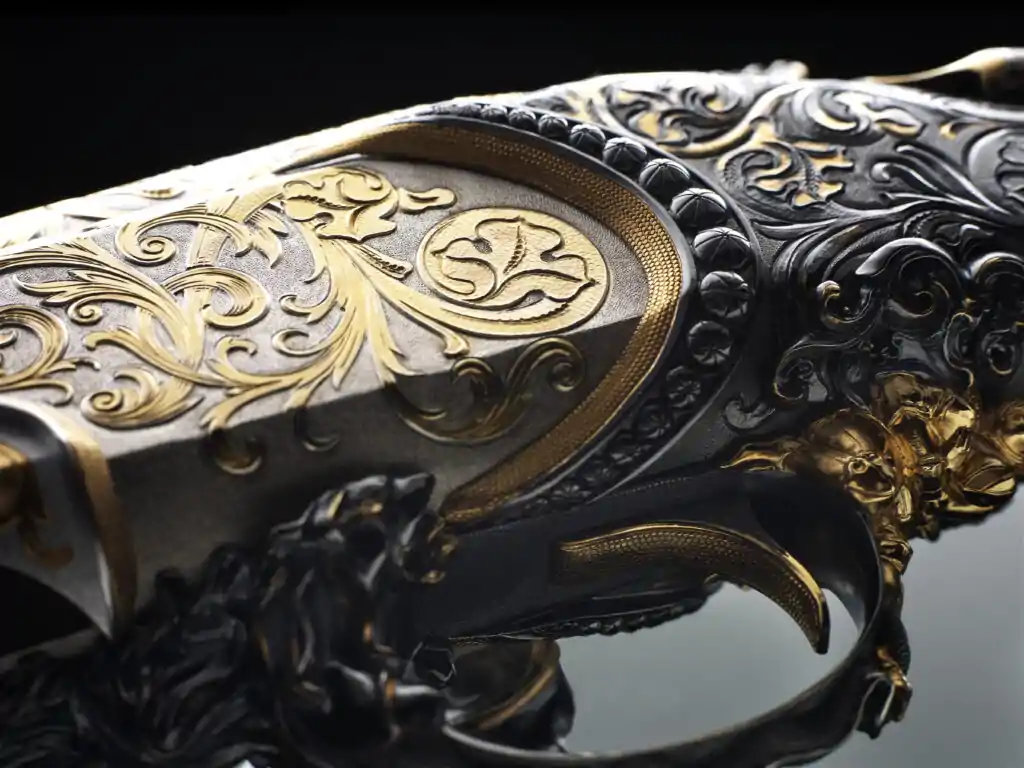
“I’m deeply impressed by Fuseli. He was called ‘The Wild Swiss’ and if ever one person earned this title, he’s the one.
‘He never can be great who honors what is little’ – a quote about him I like very much.
In the comments of contemporary artists, he is described as the genius of horror and romantic and ‘his imagination, though he seemed not aware of it, was essentially gothic.’ His paintings and drawings were collected by avid collectors but very soon they were put into attics or servant rooms because children and especially moralists feared the depicted sceneries.”
The House of Mueller Murgenthal creates highly exclusive and bespoke luxury weapons and objets d’art. The founder and artist Vivian Mueller delivers an exclusive insight into his inspirations and the background of his work.
THE ARTIST
Vivian was born in the late 50s in Lucerne and growing up in this city was crucial for his career.
“Growing up in a catholic still medieval town like Lucerne surrounded by pictures and allegories of death, you either become depressed or indifferent. I decided to cope with this dilemma by creating my own illustrations of the subject”, he says with a smile. Indeed, Lucerne didn’t change much since the middle-ages until the 19th century and so many medieval buildings and paintings are still preserved all over the city. The famous Spreuer Bridge for example, dating back to 1408, contains paintings in the interior triangular frames, showing a Danse Macabre by Caspar Meglinger. These baroque paintings from 1637 are an artistic allegory on the universality of death. Everybody can be visited by Death at any time. Vivian grew up nearby and had to cross this morbid bridge almost every day – a very impressive experience for a young boy.
Lucerne became a tourist attraction in the late 19 th century, when tourism arose and international travelers discovered the historical beauty of the untouched city. Among the most famous early tourists in Lucerne are Queen Victoria of England, who visited the city in 1868 in remembrance of her beloved deceased husband Prince Albert – an admirer of the Swiss Alps –, and the author Mark Twain who visited Lucerne in 1878 as part of his research for his famous book “A Tramp Abroad”.
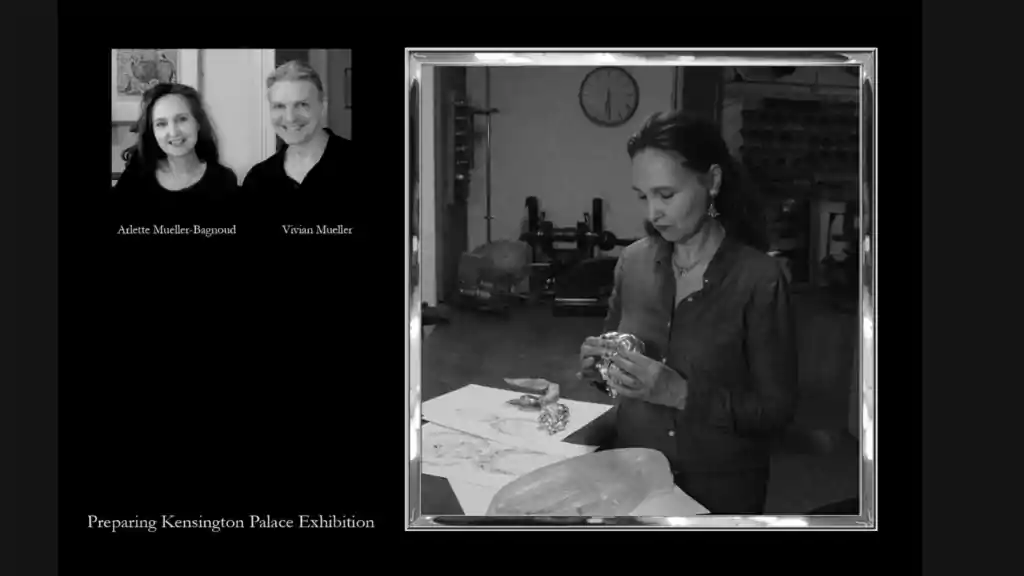
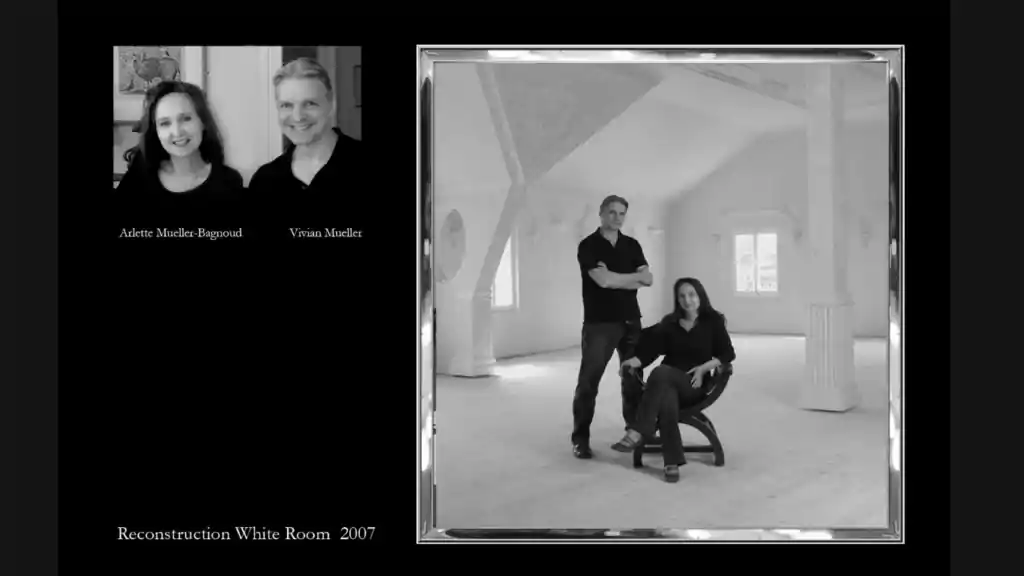
The House of Mueller Murgenthal creates highly exclusive and bespoke luxury weapons and objets d’art. The founder and artist Vivian Mueller delivers an exclusive insight into his inspirations and the background of his work.
Many wealthy tourists, especially from England, used Lucerne as a stopover on their way to the Mediterranean Riviera. This was an opportunity for jewelers in the style of Louis Cartier, Boucheron, Carl Fabergé or Tiffany to arise. A whole generation of fabulous jeweler, engravers, chasers and gold- and silversmiths was born and they began to serve the most exclusive wishes of the international clientele at houses like Gübelin, Bucherer or Bossard. Vivian was lucky enough to learn from one of the old masters. The ancient knowledge of silversmithing was brought to him by his master like in a time capsule. Early in his career as an engraver and silversmith, Vivian got in touch with knighthood, the living tradition of the craftsmanship and the compliancy of particular wishes for his clients. Out of this, he evolved his own exclusive workshop to serve royal houses all over the world with a certain nonconformity regarding the regular views of art and craftsmanship which led to the unique vanguard creations in weaponry. However, the artist is very down-to earth regarding his own work:
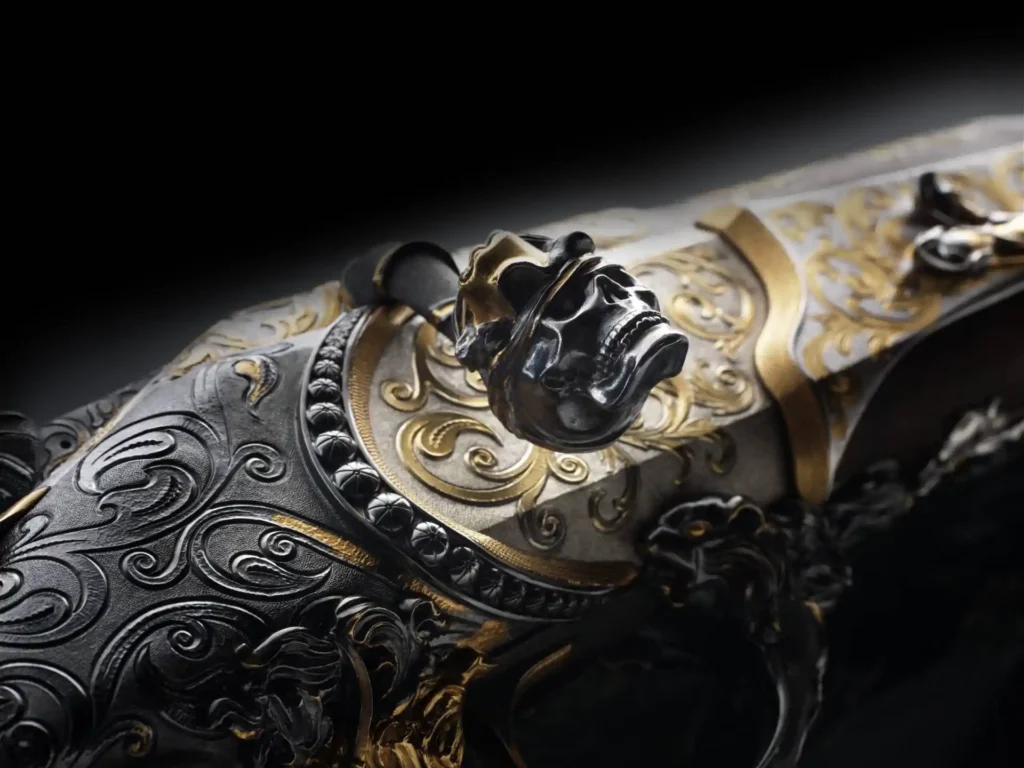
An unrespectful treatment like this is a thorn in Vivian’s side – nevertheless he experienced it a lot:
“You remember that scene with Audrey Hepburn in ‘Breakfast at Tiffany’s’? The way she’s treated by the salesman even though her budget is only 5 dollars? I call this class. This is the way I want to treat my customers but not all colleagues share this opinion. Once we were invited by an English equivalent in London, Mayfair. They wanted us to create a masterpiece for their Moscow showroom – but they treated us like 3rd class suppliers with a lot of stiff upper lip and chauvinism on their side.
Well … Nowadays they sell rubber boots under a French fashion label whereas we secured the rights of Gastinne Rennette, a noble house of weaponry located in Paris. They understood weaponry as real art.”
Speaking of fashion: Vivian is not only a master in silversmithing and weaponry, he’s also the author of an adventurous book series set around a fashion designer in the 1950s who accidentally gets involved in many murder mysteries. His heroine sets the benchmark for many of his art pieces and materials he’s working with: “In the question of taste I don’t have to ask YSL or Louis Vuitton, I can rely on my book heroine, Herlève. She is the style authority. Who else would find such an accurate description of the ugly Walther P38 pistol: ‘I’d rather be dead than shot with a Walther P38.”
Besides the joking, Vivian puts his heart and soul into every piece that leaves the house of Mueller Murgenthal and so his final words regarding his artwork are not a surprise: “I would definitely buy my own stuff – if I could afford it.”
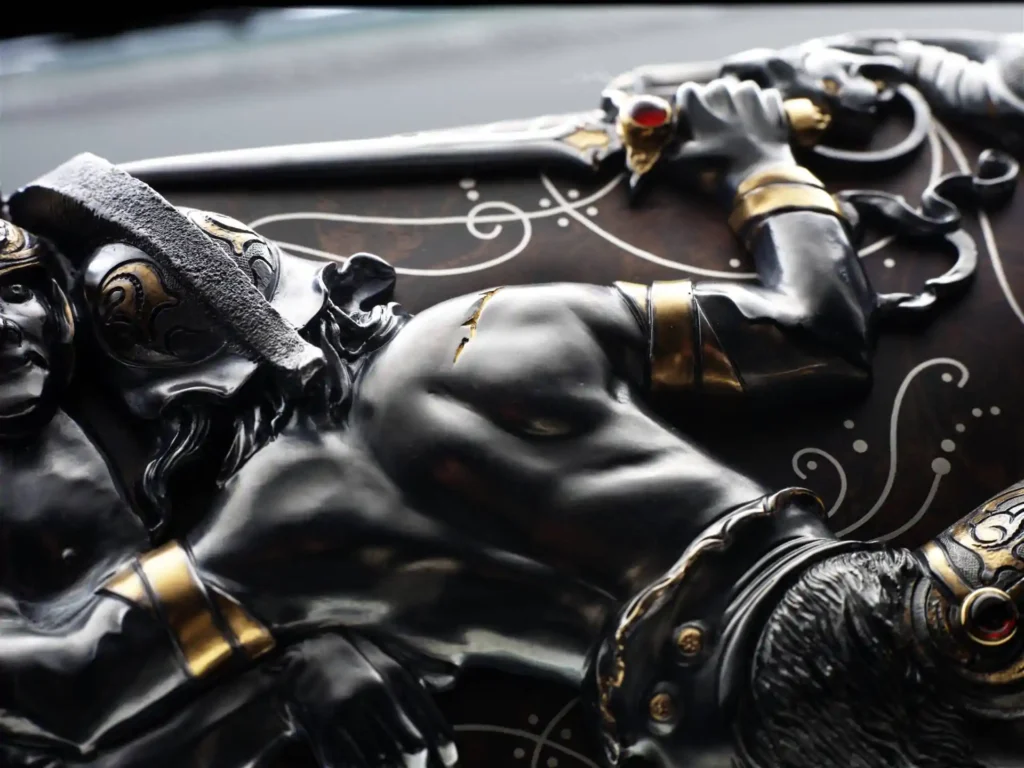
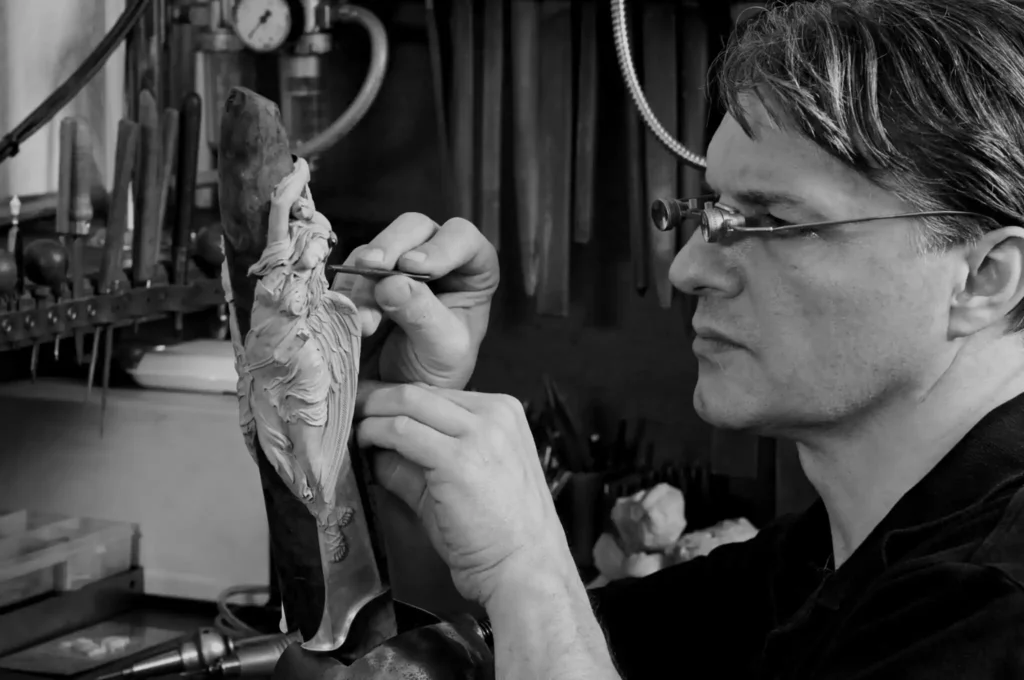
Let’s close this article with some more quotes which might or might not help to understand the mind behind the beautiful and artistic creations of Mueller Murgenthal:
“I often spend my mornings debating with Leonardo da Vinci or Albrecht Durer about the advantages and disadvantages of electric light. Apart from that, we are on the same page.”
“I owe a lot to the catholic church: They had better pictures than Walt Disney.”
“I never make mistakes – I have enough to do with those which find me coincidentally.”
“There are millions of love songs but you never hear about Romeo and Juliet in their age and I’m not talking of cynicism or bitterness.”
“Our so-called art is nothing else than hard, sweat-thriving work. We can easily swap places with any bricklayer. Only the gallerists try to make the audience believe in the divine inspiration of the artists.”
So, it’s no wonder that Vivian replies with some sort of humor when asked about the inspiration for his unique creations. “Of course, I’m inspired a lot by the fine arts, especially dance. If I carefully consider the similarities and differences of the wide classic ballet and our profession, I only see one significant difference: We rarely wear tutus while working.
Like Fuseli, Vivian doesn’t bow to contemporary art, as a matter of fact, he has his very own opinion of the, in his view, regulated art: “I don’t have any respect for contemporary art. Art has always been and has to be controversial. When it becomes institutional, it gets a touch of moralism. Once I created the pistol ‘Necropolis’ which I referred to as a suicide pistol. I submitted the piece to a contemporary art contribution, but the responsible committee freaked out and refused to accept the Necropolis.”
